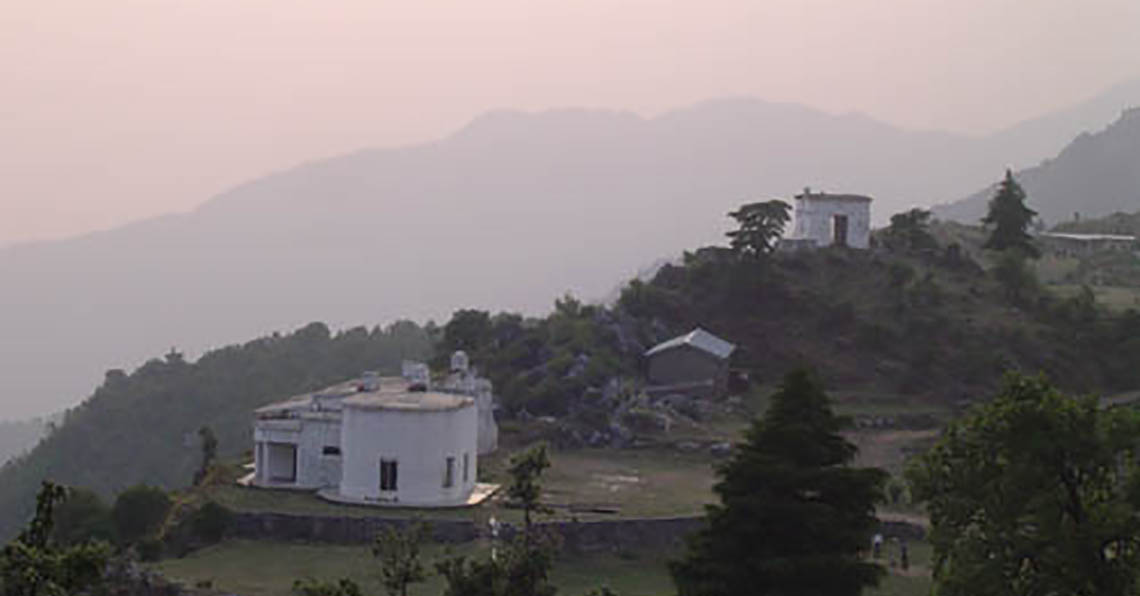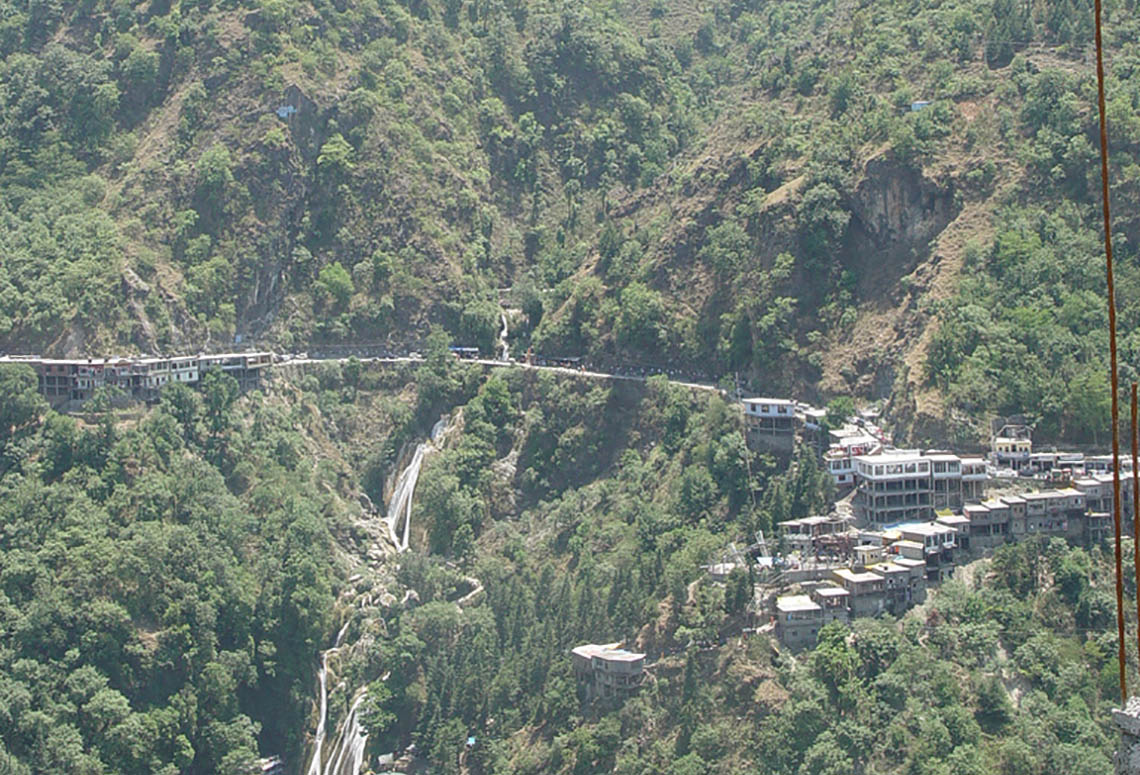Romance in the hills
Original article published in Go-getter magazine, Feb 2011. Re-published here with the kind permission of the author, Shireen Bharucha and Go-getter magazine.
Established by the British, Mussoorie has the sights, the weather, the wild flowers- and loads of history.

Legend has it that a young British army officer, Captain Frederick Young, was looking for a cool summer retreat in 1825. He constructed a shooting lodge in the hills above Dehradun. Thus was born a hill station that would be very popular with Indians more than a century later, Mussoorie. Set in the foothills of the Garhwal Himalayas, at an approximate altitude of 2,000 metres, the name Mussoorie is believed to be derived from the local shrub Mansoor which grows in abundance.
The locals call the town Mansoori. Snow-capped Himalayan ranges lie to the northeast, and the Shiwalik ranges to the south. The hill station also offers spectacular views of the Doon valley, pine-scented hills adorned with deodars, rhododendrons and colourful wild flowers. What more could be asked for nature’s paradise?
The most important landmark in Mussoorie is the Mall – the heart of town. The Mall extends for two km from Gandhi Chowk, which bears the bust of the Mahatma, to the end of Kulri Bazaar, Mussoorie’s most happening market. Locally owned shops intriguingly sell unrelated goods. For example a chemist dealing in pharmaceuticals, also sells clothes, toys and confectionery. Now, big brands like Lotto, United Colours of Benneton and Levis, to name a few, have edged in to Kulri.
The two popular restaurants serving Tibetan, Chinese and Thai food are The Rice Bowl and Kalsang Friends’ Corner. The former is pricier and more sophisticated of the two. The quality of food is superior too. Several bakeries and sweetmeat shops cater to the taste buds of gourmets. For book lovers the Cambridge Book Shop has its own USP. The shop is well stocked with titles by Ruskin Bond, who resides at Landour, Mussoorie’s twin township. Every Saturday evening, this genial author comes to Cambridge to meet his fans and autograph books. Chatting with him is exciting and getting books autographed by him is a privilege.
The Mall boasts of a small but interesting Jawahar Aquarium, which has unusual fishes like the Malaysian Arowana, the Red Bellied Piranha, the Tiger Oscar and the Two Coloured Koi. Christehureh is the Mall’s most famous historic landmark. The Angilian church built in 1836 is believed to be the Himalayas’ most ancient church. Built in the Gothic style, its pre-Raphaelite stained glass windows, depicting the events in the life of Jesus, are marvelous works of art.

Sir George Everest House, also known as Park Estate, built in 1832, is one of Mussoorie’s four oldest houses. A military engineer, Everest was the first Surveyor General of India. He surveyed a peak known as XV, recording its location and height. Known today as Mt. Everest, the world’s highest peak has been named after him. The house is set in picturesque surroundings from where scintillating views of the Doon Valley on one side and the Yamuna valley and snow-capped peaks on the other are visible. We are dismayed to find the house and laboratory, a heritage structure, in ruins. Brilliant sunsets can be witnessed from here.

Cloud’s End, built in 1838 by a British Major, another of Mussoorie’s four oldest buildings, has fared better. Located at the edge of a cliff, one feels that one is at the end of the clouds, hence the name. The bungalow has been prepared as a museum where antique belongings of past residents are displayed, along with ancient photographs. Some of the items of furniture are interesting, like the giant almirah, which seems to have a carving of Hercules holding it up. Some rooms and cottages have been converted in to a resort for those who prefer to get lost in the wilderness of thick deodar forests. We take a short walk to the Echo point nearby, where again, the valley view is amazing.
Many Tibetans reside at Happy Valley in Mussoorie, since it was here that the Dalai Lama initially established the Tibetan Government in Exile in 1959. A lovely monastery called Shedup Choepelling Temple is situated amidst a neat garden, overlooking the valley. The colourful pillars and murals add to the charm. Inside the monastery is a life-like statue of the Dalai Lama. As I turn the prayer wheels, reciting ‘Om Ma Ni Pe Me Hung’, an instant calm descends on me, for these words purify negative energies like pride, jealousy, passion, stupidity, possessiveness and hatred.
Mussoorie’s biggest waterfall and major tourist attraction, Kempty, on the Chakra road, was developed by British officer John Mekinan in 1835. Kempty probably got its name from ‘camp tea’, as the British organized tea parties here. Situated 15 km from Mussoorie, we hire a cab for the visit. To assess the actual falls, a ride in Kempty Ropeway’s cable car is necessary, unless one is prepared to walk downhill. This gigantic cascade surrounded by majestic mountain ranges, roaring down from an altitude of 4,500 ft, offers a stupendous spectacle as it splits in to five streams which hop and bounce over boulders. Mindless of the cold, people have a happy time splashing around in the water.

Originally from Darjeeling, I have an abiding romance with snow-capped peaks. A visit to Gun Hill, Mussoorie’s second highest peak at 2,350 metres, is gratifying. A 400 hundred metre ropeway ride from the Mall has us at the summit in a Jiffy. During the Raj a cannon was fired daily at midday, so residents could adjust their watches, hence the name. Gun Hill overlooks the Bunderpunch, Srikantha, Pithwara and Gangotri ranges – a grand panorama that soothes sore eyes. We can also see the town of Mussoorie spread out below. The place has a festive atmosphere, with snack and gaming stalls, curio sellers and photographers urging us to dress up as the local Garhwalis. Our priority however, after enjoying all the natural beauty, is to sit at an outdoor snack stall, enjoy a hot cup of tea, soak in some sun and thaw out on the chilly morning.
If Gun Hill gratifies, a trip to Dhanaulti, a small, tranquil village, 25 km from Mussoorie on the Tehri Road enthralls. The village is surrounded by forests of deodar, rhododendron and oak, over which the Himalayas look down divinely. There is an eco-park here. A walk through the forested paths and some wild flora that we come across has a therapeutic effect on our jangled city nerves. However, it is the midway view point at Buransh Khanda on the way to Dhanaulti that really takes our breath away. The mountain ranges we see from here are the same as those from Gun Hill, but they seem much closer, bigger and clearer – a glorious sight to behold.
Camel’s Back Road, a 3 km walk that begins from Kulri Bazaar and ends at Gandhi Chowk, is rewarding. We walk up to Hawa Mahal, a view point at dusk. The russet glow of the setting sun reflects on the Himalayan ranges which shimmer ethereally – a photo opportunity not to be missed. After a refreshing cup of tea, we walk a little further and discover why thus road is so called. On top of the hill is a rocky outcrop that has a life-like resemblance to camel’s hump.
We stay at Sterling Resorts, 2.5 km from Gandhi Chowk. We usually take a cab into town, but one day we walk the distance in order to appreciate the views of the snowy ranges over the town better. We also photograph the wild flowers on the hillsides and little creatures like uncommon lizards. This encourages us to take another 3 km walk from sterling in the opposite direction which culminates at the Company Garden. The clouds paint the sky with surreal patterns. We come across a streaked laughing thrush, singing unabashedly.
Each twist and turn offers something different. Sometimes we are face-to-face with the mighty snow-capped peaks and at others we walk through forests in their autumn colours. At the garden, pansies, begonias and roses are at their best. The fountain and little artificial waterfalls beautify the place. There is a little aquarium too. There are plenty of food stalls, but we prefer to eat at the garden restaurant which is comparatively hygienic.
However Mussoorie’s varied moods are best captured from Sterling. Perched on a hillside, each room offers an awesome view of the mountains. At least five ranges, one behind the other, overlook the Doon valley with its dry river bed and terraced fields. The black headed jay gives a screechy wakeup call. I rise with the noisy bird, to see the ranges eerily shrouded in mist. The sun rises evaporating the mist and setting the horizon ablaze with golden hues streaking across the ranges. As the first warm ravs caress the flowers in the garden, the butterflies and bees begin a new day.
By noon an all embracing cold, clammy, dense mist swirls up from the valley blotting out the sun and visibility. Just as suddenly as it rises, by sunset the midst descends into the valley by dusk and we see the most astounding sunsets bathing the sky and the mountains in shades of deep pinks and fiery reds. Finally there is the sudden storm when hail stones beat rhythmically against the windows, the drums of heaven roll in thunderous peals and bolts of lightning flash across the inky night sky. Mussoorie is bewitchingly romantic – an enticement hard to resist.
The views expressed by the author are in her personal capacity.

